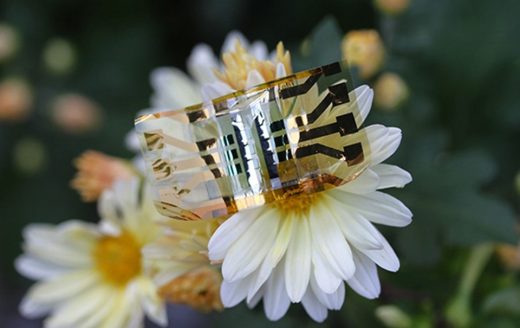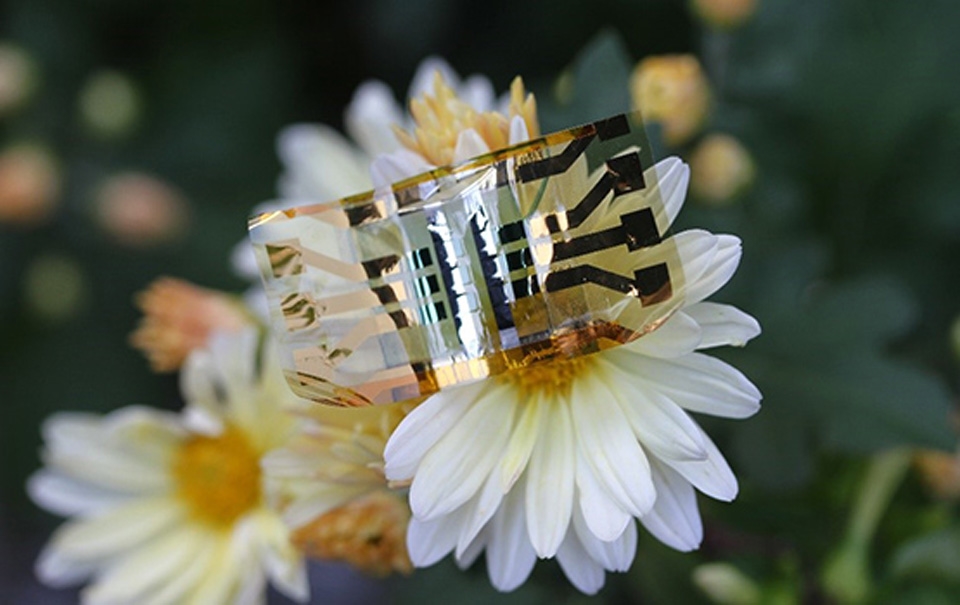Extra-light, flexible solar cell could keep your smartwatch powered
Solar-powered smartwatches might become more practical in the years ahead. Researchers have developed a flexible solar cell that could be an ideal fit for future wearable tech. It’s 10 times thinner (0.3 micrometers) than human hair and, as you’ve likely noticed in the photo, light enough that it can sit on a flower. And importantly, it’s still reasonably powerful with an output of 9.9W per gram — it might have enough power for a full-featured smartwatch.
The technology could keep devices running for a long time, too. Tests suggest that it could degrade by just 4.8 percent after more than 4,700 hours, and last for 20,000 hours with “minimal degradation.” The useful shelf life would be about 11.5 years, Monash said.
The trick was to develop “mechanically robust” light-absorbing materials that achieve some of the highest power conversion efficiency of any organic cell, at 13 percent. That’s lower than many conventional solar cells (over 20 percent), but should be enough for wristwear. They’re relatively easy to make thanks to continuous printing tech.
Be sure to temper your expectations. The research team is planning to commercialize the new solar cell tech, but inventions like this can take years to refine and implement. The advantages are clear, at least. This could lead to more wearables that only need small batteries, or none at all. That could keep them running for much longer and slim them down compared to the relatively bulky devices you see today.
(17)




